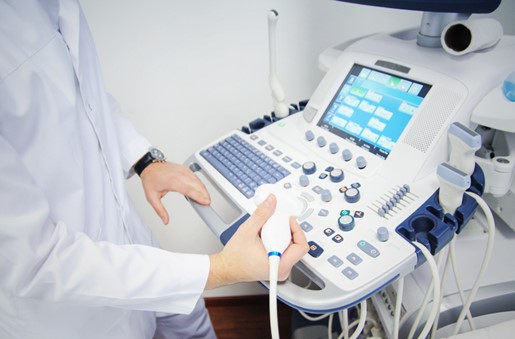Using Ultrasound and Machine Learning to Predict Recurrence in Papillary Thyroid Carcinoma

Papillary thyroid carcinoma (PTC) is the most common type of thyroid cancer, with a high survival rate of 90–95% thanks to surgical treatment and radioactive iodine therapy. However, some patients experience recurrence, either locally in the neck or as distant metastases in the lungs, bones, or liver. These recurrences often require secondary surgery or additional radioactive iodine therapy, which can significantly impact a patient’s physical and mental health. Early identification of patients at risk for recurrence is essential for improving outcomes and guiding treatment decisions.
Several clinical factors have been associated with an increased risk of recurrence in PTC, including age, tumor size, extrathyroidal extension, and lymph node metastasis. While ultrasound imaging is commonly used for evaluating thyroid nodules and lymph nodes, its ability to predict recurrence has been limited. This study aimed to improve recurrence prediction by combining ultrasound-based radiomics with clinicopathological data through a machine-learning model.
How the Study Was Conducted
Researchers analyzed data from 554 patients with PTC who underwent preoperative ultrasound imaging and total thyroidectomy. Of these patients, 79 experienced at least one recurrence during follow-up. The study divided patients into a training cohort and a validation cohort to ensure that the model could be tested on separate groups.
Radiomics features were extracted from ultrasound images by manually defining the tumor’s region of interest. Statistical methods, including Cox regression and the least absolute shrinkage and selection operator (LASSO) method, were used to identify the most relevant imaging features. A combined predictive model, or nomogram, was then developed by integrating both radiomics signatures and key clinical factors.
Key Findings and Performance of the Predictive Model
The combined nomogram outperformed both the radiomics-only model and the clinical model in predicting recurrence. It achieved an area under the curve (AUC) of 0.851 in the training cohort and 0.885 in the validation cohort, indicating strong predictive accuracy. Calibration curves confirmed that the model’s predictions closely matched actual patient outcomes.
Patients with a higher radiomics score (Rad-score) had significantly lower recurrence-free survival than those with lower scores. Similarly, a higher risk score calculated from the nomogram was associated with an increased likelihood of recurrence. These findings were confirmed using survival analysis, where patients with high scores had significantly worse recurrence-free survival compared to those with lower scores.
The findings suggest that integrating radiomics-based ultrasound analysis with clinical factors provides a more accurate and reliable method for predicting PTC recurrence. This predictive tool could help doctors identify high-risk patients early, allowing for personalized treatment strategies. Patients with a higher predicted risk of recurrence might require closer monitoring, more aggressive surgical approaches, or additional therapeutic interventions.
This model also highlights the potential of radiomics in thyroid cancer management. Radiomics, which involves extracting high-dimensional imaging features beyond what the human eye can detect, has already shown promise in cancer diagnosis, tumor staging, and treatment response prediction. Its application in predicting thyroid cancer recurrence represents an important step toward more data-driven, personalized medicine.
To learn more, read this!: Ultrasound-based nomogram to predict the recurrence in papillary thyroid carcinoma using machine learning | BMC Cancer | Full Text

